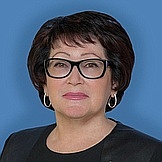Regional flags and emblems


PROFILE
Established 20 October 1938
Capital Vladivostok
The Primorye Territory is part of the Far Eastern Federal District
Area 164,700 sq km
Population 1 798 000 (2025)
Ethnic groups
(2020 National Census, %)
Russian – 94,42
Other – 5,58
Administrative divisions (2024)
Municipal areas – 5
Municipal districts – 17
City districts – 12
Rural towns – 3
Rural districts – 27
Geography and climate
The Primorye Territory is located in the south of the Russian Far East, on the coast of the Sea of Japan. The territory includes the Russky, Slavyansky, Reyneke, Putyatina and Askold islands. The Sikhote-Alin mountain range (1,855 m high) is the main dividing line in the Primorye Territory. In the east, its slopes are steep, and rivers run into the Sea of Japan. In the west, the rivers run into the Ussuri River. The second dividing range is the Manchurian Mountains. Down their slopes, rivers flow into the Peter the Great Gulf. The Ussuriiskaya and Prikhankaiskaya plains are located in the southwest.
The Primorye Territory borders on the Khabarovsk Territory, China and North Korea.
There are over 6,000 rivers in the Primorye Territory. The main river is the Ussuri. The largest water reservoirs are the Artyomovskoye, Primorskoye and Dachinskoye. A large part of Lake Khanka is located in the territory. The region has a monsoon climate with rain-fed streams, influenced by the uneven distribution of rainfall. Flooding often occurs in the warm season, and in the winter, the stream runoff is unbalanced. The average temperature in January is −15.9°C, and the average July temperature is +20.6°C. Average precipitation in January is 7 mm; average precipitation in July is 137 mm.
The territory has six state nature reserves (the Sikhote-Alin Biosphere Reserve, the Kaplanov Lazovsky Nature Reserve, the Komarov Ussuri Nature Reserve, the Khankaisky Nature Reserve, the Far Eastern Marine Biosphere Reserve and the Kedrovaya Pad Nature Reserve), 11 state nature sanctuaries of regional importance, four national parks and the Khasansky Nature Park.
Government
The legislative branch represented by the Legislative Assembly of the Primorye Territory, which is the permanent, representative and only body of legislative (representative) authority in the region.
The Legislative Assembly of the Primorye Territory has 40 deputies elected for five years, with 30 deputies running in single-mandate constituencies and the other 10 elected in the single electoral district under the proportional representation system.
The current Assembly was elected in September 2021. Its term expires in September 2026.
The system of executive bodies of the Primorye Territory includes the Governor of the Primorye Territory, the Government of the Primorye Territory, and other executive bodies of the Primorye Territory. The Government of the Primorye Territory is the permanent supreme body of executive authority in the region.
The Governor of the Primorye Territory is the highest-ranking official, who runs the executive branch of the Primorye Territory, determines the system and structure of the territory’s executive agencies, as well as forms the Government of the Primorye Territory.
He is elected for a five-year term by citizens of the Russian Federation who permanently reside in the region. The term of the incumbent Governor expires in September 2028.
Economy and natural resources
The main industries in the Primorye Territory are electricity production, machine-building, metal processing, as well as the fish and food industries, forestry and wood-processing industry. Industrial production accounts for about 15% of the regional GDP.
Processing industries include the ferrous and non-ferrous metals industry, engineering and metal working, construction materials production, the wood and timber industries, fuels, consumer goods production and the food industry. The largest production facilities are Dalzavod Ship Repair, Dalpribor, Askold, Zvezda Far Eastern Plant, MAZDA SOLLERS Manufacturing Rus, Varyag, Spassktsement, and Sazykin Arsenyev Aviation Company Progress.
Minerals are extracted from developed deposits of coal, fluorspar, boron, wolframite, germanite ore, gold, copper and molybdenum. The largest extraction companies are Primosrkugol, Bor, Dalpolimetall Mining Complex and Lermontovsky Mining and Processing Plant.
The Primorye Territory’s electricity, gas and water are produced and distributed by thermal power stations and combined heat and power stations. The Sakhalin-Khabarovsk-Vladivostok gas transportation network is in full operation. The largest energy facilities are DVUEK, Gapzrom LNG Vladivostok and Transneft-Kozmino Port.
Fishery facilities in the Primorye Territory provide 17% of Russia’s aquatic biological resources. The largest companies are Dalmoreprodukt Holding, Pacific Directorate of Exploratory Fishing and Research Fleet, Vostok-1 fishing collective farm, and Dalryba.
Agriculture accounts for over 5% of the regional GDP. The climate conditions are favourable for growing grain and forage crops, potatoes and vegetables. Dairy and beef cattle and pig breeding and poultry farming are well developed. The region’s agricultural sector includes over 200 companies and over 900 farms. The largest facilities are Green Agro, Mercy Trade, and Zolotaya Dolina.
Culture and tourism
The Primorye Territory has numerous historical landmarks. Primorye’s cultural life is connected with the historical past of the region. The Russian colonisation of Primorye began in the mid-19th century. Russian towns and villages appeared on the coast of the Peter the Great Gulf, near the Sikhote-Alin Mountains, the Ussuri and Razdolnaya rivers, and in the Prikhankaiskaya Valley. Primorye is home to over 2,000 of the many historical and cultural landmarks of Russian civilisation. Monuments, buildings, vessels, memorial plaques, city streets and parks are named after famous Russians. The most famous historical landmark is the Vladivostok Fortress, which is a unique rampart. The Arsenyev Primorye Museum attracts numerous tourists. The territory has several theatres; the largest ones are the Primorye Theatre of Opera and Ballet and the Gorky Academic Regional Drama Theatre.
Those interested in ancient history will be fascinated by the Shaiginskoye settlement, a unique monument of the Jurchen people who inhabited the Primorye Territory in the Middle Ages. It was a large city with many ramparts, residential buildings and factories. Another Jurchen settlement is the Ananyevskoye settlement.
The Kraskino settlement is a monument of another ancient civilisation, the Tungus state of Bohai. There are remnants of temples, houses, workshops, stoves, wells and everyday life artefacts. This area is home to the largest number of plants listed in the Russian Red Data Book.
The Primorye Territory offers sports and environmental tourism, diving, surfing, sky jumping, paragliding, alpine skiing, spelunking, hunting and fishing.


